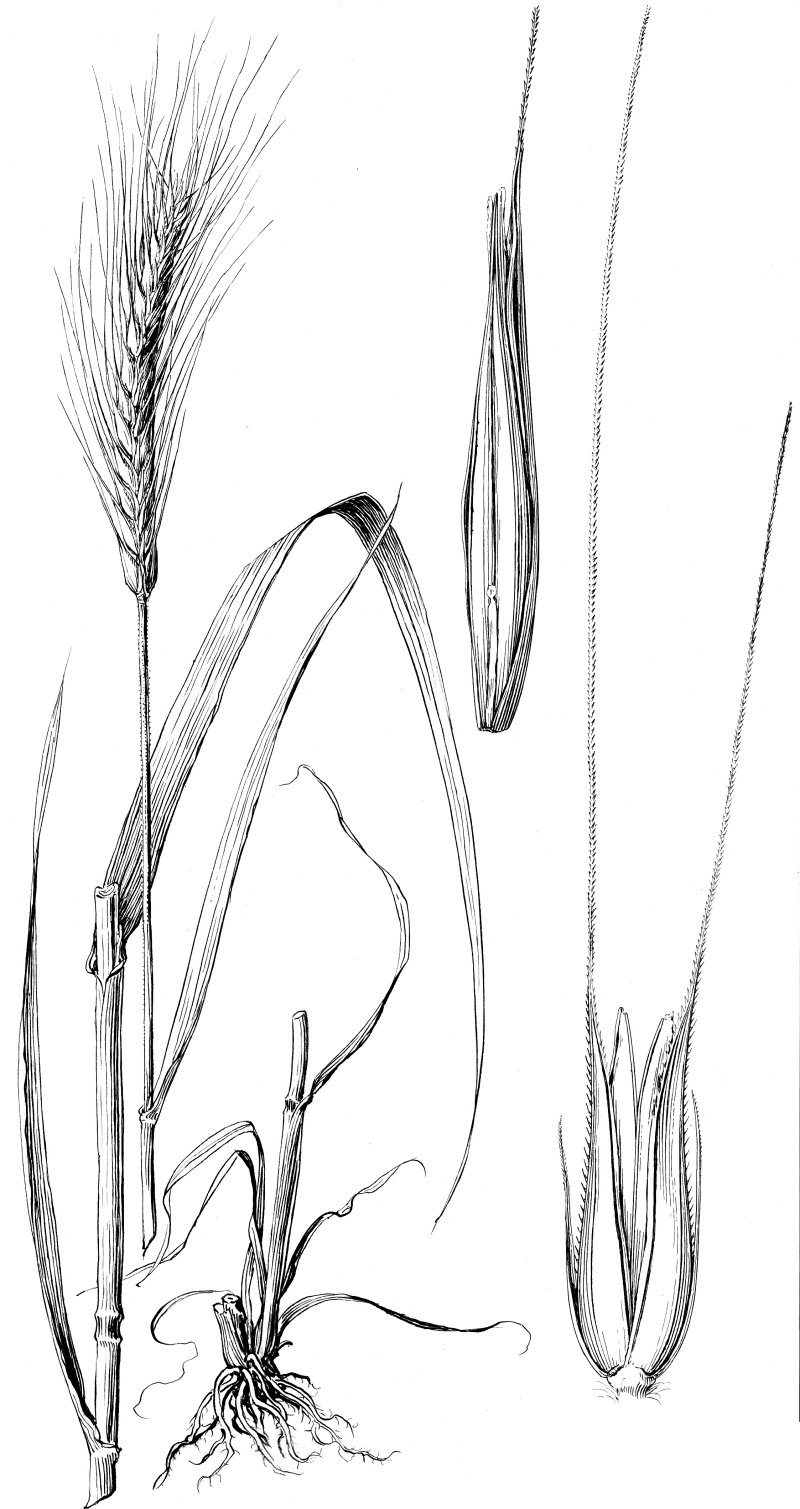
Secale cereale L. Common Rye Habit: Annual or winter annual. Culms: 1-2 m. tall, erect, usually glaucous, glabrous, or pubescent below the spike. Blades: 30 cm. long, more or less, 6-13 mm. wide, scabrous, flat, auricled. Sheaths: Usually shorter than the internodes. Ligule: Membranous, about 1 mm. long. Inflorescence: Spike 10-15 cm. long, dense, 4-angled, more slender than wheat, nodding rachis internodes pubescent on the edges. Spikelets: Usually 2-flowered, or the third rudimentary floret above, solitary at each node, alternate, placed flatwise against the rachis. Glumes: Narrow, rigid, wn-pointed, 1-nerved, scabrous on the keel, with one edge toward the rachis. Lemmas: Asymmetrical lanceolate, 5-nerved, sharply keeled, ciliate on the keels and exposed margins, tapering into a long awn. Fruit: Grain slightly compressed laterally, deeply furrowed, free, pubescent at the apex. Habitat: Waste places, roadsides, and old fields; escaped from cultivation, but not persisting. Kansas Range: Scattered throughout. Use: A cultivated grain, winter pasturage, green feed, green manure, and to a certain extent in public lawn mixtures. Remarks: The common host plant of the fungus, ergot.